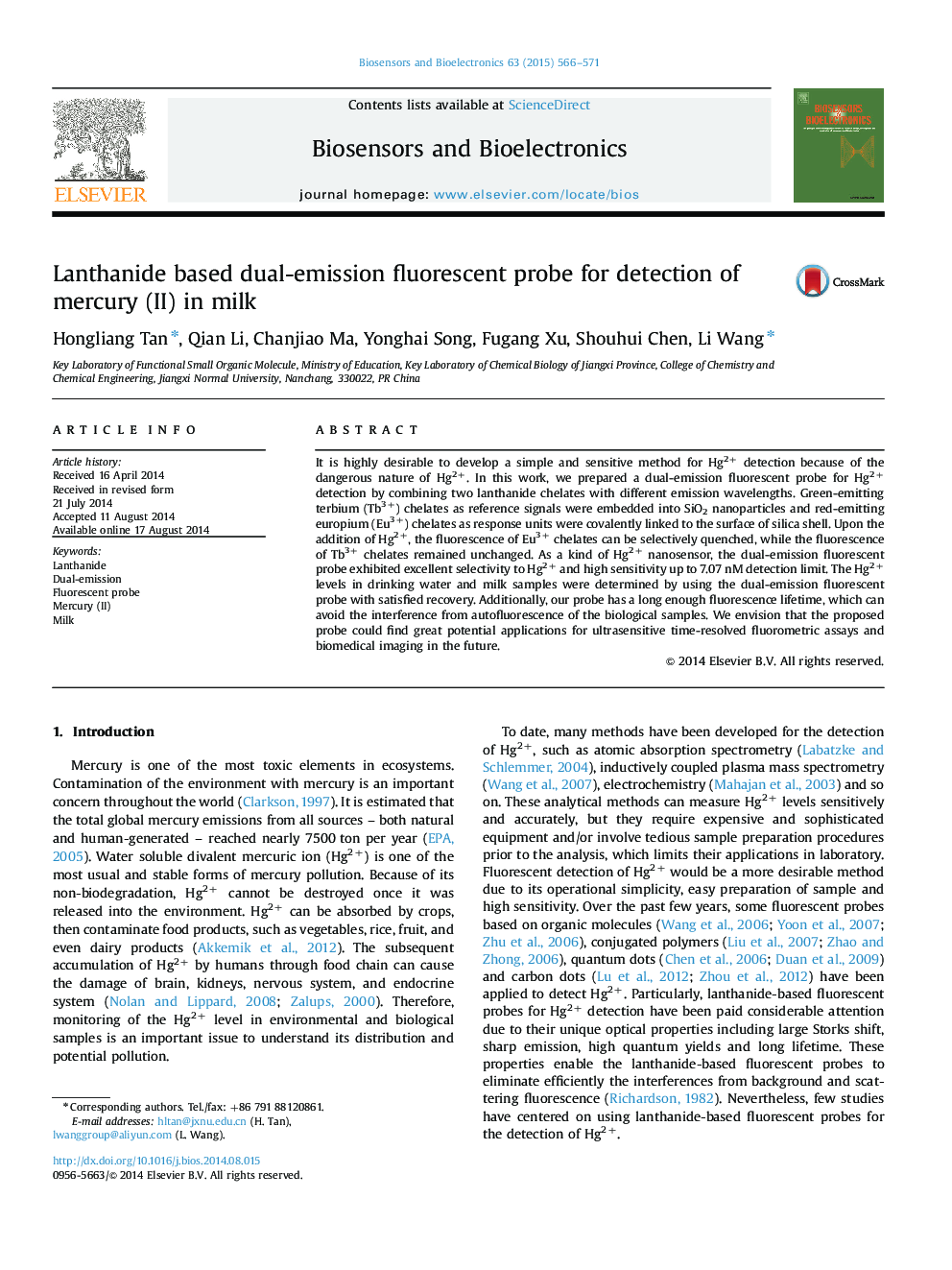| Article ID | Journal | Published Year | Pages | File Type |
|---|---|---|---|---|
| 7233352 | Biosensors and Bioelectronics | 2015 | 6 Pages |
Abstract
It is highly desirable to develop a simple and sensitive method for Hg2+ detection because of the dangerous nature of Hg2+. In this work, we prepared a dual-emission fluorescent probe for Hg2+ detection by combining two lanthanide chelates with different emission wavelengths. Green-emitting terbium (Tb3+) chelates as reference signals were embedded into SiO2 nanoparticles and red-emitting europium (Eu3+) chelates as response units were covalently linked to the surface of silica shell. Upon the addition of Hg2+, the fluorescence of Eu3+ chelates can be selectively quenched, while the fluorescence of Tb3+ chelates remained unchanged. As a kind of Hg2+ nanosensor, the dual-emission fluorescent probe exhibited excellent selectivity to Hg2+ and high sensitivity up to 7.07Â nM detection limit. The Hg2+ levels in drinking water and milk samples were determined by using the dual-emission fluorescent probe with satisfied recovery. Additionally, our probe has a long enough fluorescence lifetime, which can avoid the interference from autofluorescence of the biological samples. We envision that the proposed probe could find great potential applications for ultrasensitive time-resolved fluorometric assays and biomedical imaging in the future.
Related Topics
Physical Sciences and Engineering
Chemistry
Analytical Chemistry
Authors
Hongliang Tan, Qian Li, Chanjiao Ma, Yonghai Song, Fugang Xu, Shouhui Chen, Li Wang,
